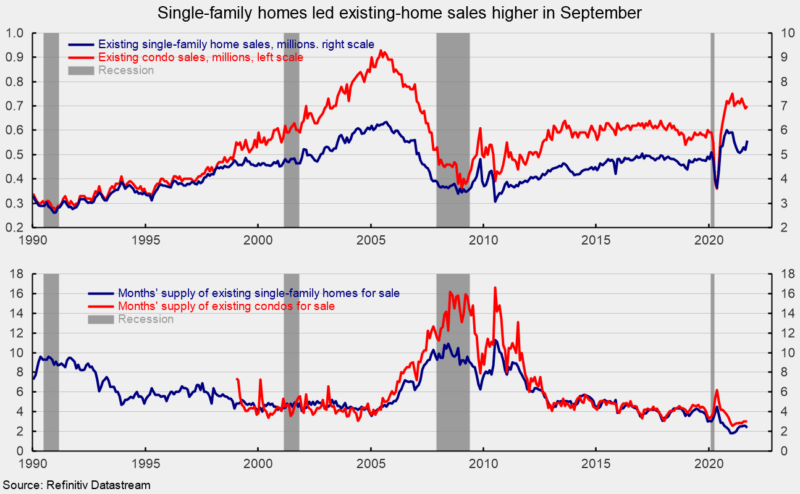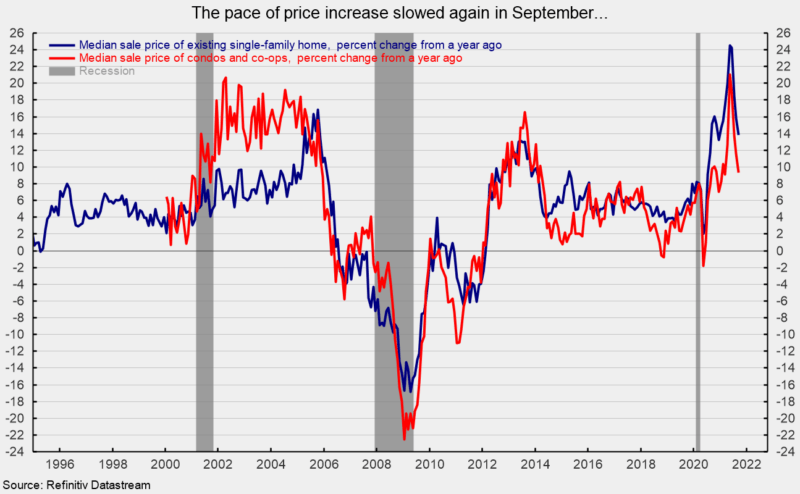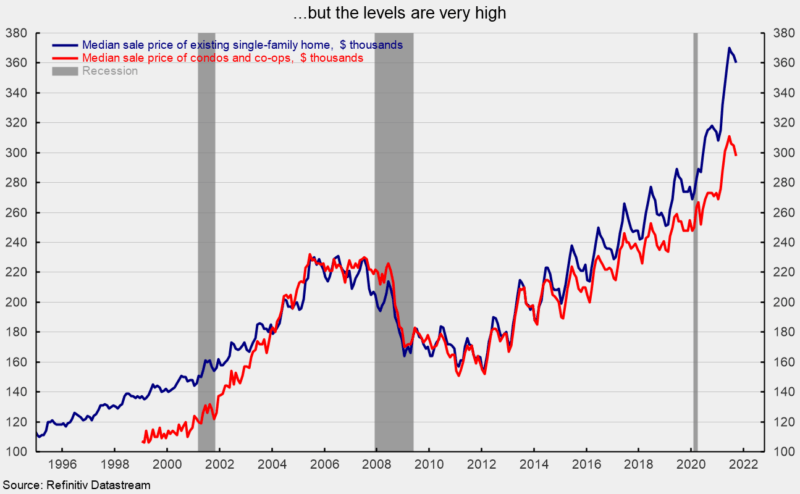Existing-Home Sales Rose and Inventory Fell in September
Sales of existing homes jumped 7.0 percent in September, to a 6.29 million seasonally adjusted annual rate. Sales are still down 2.3 percent from a year ago. Sales in the market for existing single-family homes, which account for about 89 percent of total existing-home sales, rose 7.7 percent in September, coming in at a 5.59 million seasonally adjusted annual rate (see top of first chart). From a year ago, sales are down 3.1 percent. Condo and co-op sales increased 1.4 percent for the month, leaving sales at a 700,000 annual rate for the month versus 690,000 in August (see top of first chart). From a year ago, condo and co-op sales are up 4.5 percent.
The median sale price in September of an existing home was $352,800, 13.3 percent above the year ago price. The pace of gain has slowed over the last few months since hitting a pace of 23.6 percent in May.
For single-family existing home sales in September, the price was $359,700, a 13.8 percent rise over the past year. That pace is down from 15.6 percent in August and 24.5 percent in May (see second and third charts).
The median price for a condo/co-op was $297,900, 9.3 percent above September 2020 but slower than the 12-month gain of 10.8 percent in August and 21.0 percent in May (see second and third charts).
Total inventory of existing homes for sale fell in September, declining 0.8 percent to 1.27 million, leaving the months’ supply (inventory times 12 divided by the annual selling rate) at 2.4 versus 2.6 in August.
For the single-family segment, inventory decreased 0.9 percent to 1.10 million and is 10.6 percent below the September 2020 level. The months’ supply was 2.4, down from 2.6 in the prior month (see bottom of first chart).
The condo and co-op inventory rose 0.6 percent to 173,000, leaving the months’ supply unchanged at 3.0 (see bottom of first chart).
High prices are continuing to push some buyers out of the market, helping restrain sales. However, inventory remains low, keeping months’ supply near record lows. Furthermore, some fading of the rush out of dense urban areas for suburban housing or rural country homes may be undermining housing demand, though the establishment of permanent remote working policies is likely providing some support. Housing is likely to be volatile over the coming months as fundamentals adjust to changing market conditions.








